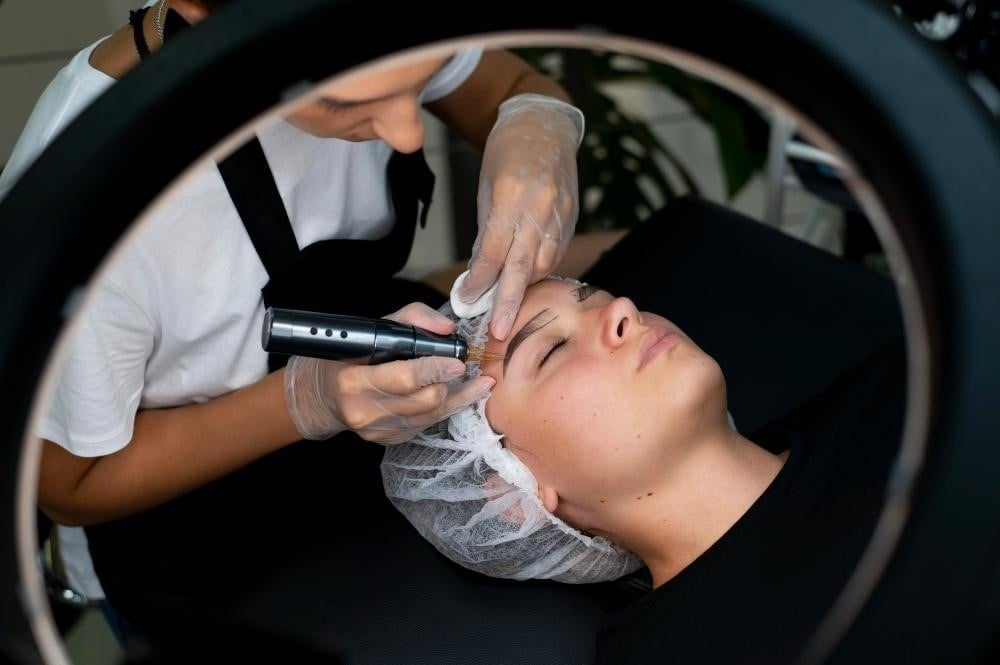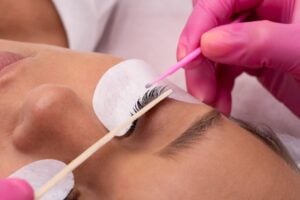If the beauty industry has always interested you or you’ve simply noticed that you have a good eye for detail, then perhaps you should consider becoming a brow technician. In this blog post, we are going to cover everything you need to know about how to become a brow technician, including the certifications required, tips for building a successful career and more.

What Exactly Does a Brow Technician Do?
If you want to learn how to become a brow artist, you should first understand what you’ll actually be doing day-to-day. You’ll be the person clients trust to frame their faces perfectly. Your toolkit will include several techniques:
- Threading: hair removal method using twisted cotton thread
- Waxing and tweezing: the classics that never go out of style
- Tinting:adding color to enhance sparse or light brows
- Microblading: semi-permanent brow tattooing technique
- Lamination: a treatment that makes brows look fuller and more uniform
Your job goes way beyond just removing unwanted hair. You’ll study each client’s face shape, bone structure and style to create brows that truly complement them. Some clients want bold, Instagram-worthy arches, while others prefer a subtle, natural enhancement.
You’ll become skilled at reading what people really want (sometimes it’s different from what they initially ask for!). That’s why thorough initial consultations matter.
The technical skills are just part of it though. You’ll also need to be a people person. Someone who can make clients feel comfortable and confident. Plus, maintaining spotless hygiene standards is absolutely critical for client safety and your professional reputation.

Getting the Training You Need
In order to become a brow technician you need proper training and there are actually several ways to get there. The path you choose often depends on your budget, timeline and learning style.
Esthetician School: This is the safest route which will allow you to obtain a license later on. In most states. An esthetician program covers brow services like shaping, tinting and waxing. In this way you’ll get all the theoretical and practical knowledge you need.
Cosmetology School: Sometimes, you can choose to go for a cosmetology program. You’ll get comprehensive training in all aspects of beauty, not just brows. It takes a bit longer, but you’ll come out with a broad skill set.
Apprenticeships: Sometimes you can learn by shadowing an experienced technician. This gives you real-world experience from day one.
The costs of these options vary anywhere from a few hundred dollars for basic training to several thousand for comprehensive programs. Don’t automatically go for the cheapest option though. Your training is an investment in your entire career!
You should also make sure to check if your beauty school offers financial aid or scholarship programs!
Choosing Your Training Program Wisely
This is where you really need to do your homework. We often see too many people get burned by flashy programs that don’t deliver. Here’s what to look for:
Start with the reviews, but dig deeper than just star ratings. Look at before-and-after photos from graduates. Do their portfolios impress you? Can you see clear improvement from their training?
If possible, book a tour to visit schools in person. Ask about job placement rates and ongoing support. Some programs offer lifetime access to refresher courses, which is incredibly valuable in this constantly evolving field.
For specialized techniques like microblading, make sure the program covers everything: color theory, skin types, sanitation protocols, and business basics. A good program should also include plenty of practice time with live models.

Brow Certification and Licensing
Once you finish your training, you can’t just hang up your shingle and start working. Every state has different requirements, but most require some form of licensing.
For basic brow services like waxing and tweezing, you’ll typically need an esthetician license. For more advanced procedures like microblading, additional certifications are usually required and in some states, you might even need a tattoo license since microblading involves inserting pigment under the skin.
The certification process usually involves passing an exam. These tests cover everything from anatomy and sanitation to state regulations and business practices. Many programs require you to complete bloodborne pathogen training too, which makes sense given that you’re working so closely with clients.
Don’t see licensing as just a hoop to jump through. It protects both you and your clients, and it shows you’re serious about professional standards!

Building Your Business from the Ground Up
Now comes the exciting part, actually starting your career as an eyebrow tech. You’ve got two main options: working for someone else or going solo.
Working for Another Business
This might be smart when you’re starting out. You’ll get steady clients without having to market yourself, plus you can learn the business side by watching how successful salons operate. Just make sure you understand any non-compete agreements or commission structures.
Starting Your Own Practice
More risk, but potentially more reward. You’ll need a professional website loaded with high-quality photos of your work. Social media presence is crucial too. Instagram is basically your portfolio for the beauty industry.
Location matters more than you might think. You want somewhere clients can easily find and access, with good parking and a professional atmosphere. Don’t forget about all the supplies you’ll need: quality tweezers, wax, tinting products, proper lighting and comfortable seating for clients.
Consider joining professional organizations. The networking opportunities alone can be worth the membership fee.
Finding and Keeping Clients
Building a client base takes time, but there are proven strategies that work. Word of mouth is still king in the beauty industry, so focus on giving every client an amazing experience.
Online presence is non-negotiable these days. Your website should showcase your best work and make booking easy. Social media, especially Instagram, lets potential clients see your skills before they even contact you.
Don’t underestimate the power of special promotions for new clients. Just make sure you can afford to honor them. Follow-up is huge too. A simple text asking how their brows are healing after microblading shows you care about results, not just collecting payment.
Building relationships with other beauty professionals can lead to referrals too. Think hair stylists, makeup artists, photographers, anyone who works with clients who might want brow services.

What Can You Actually Earn?
Let’s talk numbers because I know that’s what you’re wondering about. Brow technician earnings vary wildly based on location, skills and client base.
Starting out, you might charge $25-50 for basic brow shaping. But experienced technicians in major cities can charge $150+ for microblading sessions. The key is building your reputation and skills.
The microblading boom has created serious earning potential. Industry predictions suggest 40% growth in this area alone. With an esthetician license, you could potentially double your hourly rate compared to unlicensed work.
Remember though: higher earnings come with higher expectations. Clients paying premium prices want premium results and service.
FAQs About Becoming a Brow Technician
Do you need a license to become a brow technician?
Most states require an esthetician or cosmetology license for basic services. Advanced techniques like microblading often need additional certifications. Check with your state’s board of cosmetology for specific requirements.
What does a brow technician do all day?
Your main focus is shaping and maintaining clients’ eyebrows using various techniques like threading, waxing, tinting, and microblading. But you’ll also consult with clients, maintain your workspace, and handle business tasks if you’re self-employed.
How long does brow tech training take?
It depends on your chosen path. Intensive workshops might be just a weekend, while full esthetician programs can take several months. Online courses offer flexibility but still require significant time investment.
Why is licensing so important?
Licensing ensures you understand health and safety standards, protects your clients from unqualified practitioners, and gives you professional credibility. It’s not just paperwork. It’s legal proof you’re qualified to perform the services you’re offering.
















